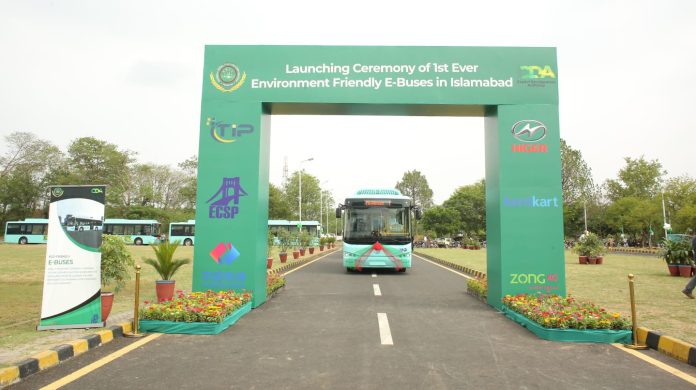A Journey of Innovation and Adaptation
The integration of electric buses (EV buses) into Pakistan’s urban transport system marks a significant step toward sustainable mobility. This initiative reflects the power of informed decision-making and collaborative partnerships, aiming for a cleaner and more efficient future.
Learning from Karachi’s Experience
The initial deployment of EV buses in Karachi faced challenges due to inadequate feasibility studies and lack of charging infrastructure. These shortcomings underscored the need for comprehensive planning.
- Strategic Route Planning: Detailed feasibility studies ensured optimal fleet utilization.
- Charging Infrastructure: Establishing reliable charging stations became a priority for seamless operations.
Role of Universal Motors Pvt. Ltd.
Universal Motors Pvt. Ltd., the authorized distributor and assembler for HIGER in Pakistan, played a pivotal role in overcoming initial challenges. Their expertise in automotive after-sales service and commitment to innovation have been crucial for project success.
Islamabad’s Landmark Initiative
The Capital Development Authority (CDA) and National Radio & Telecommunication Corporation (NRTC) partnered to introduce HIGER 9-meter electric buses in Islamabad. This initiative focused on technical excellence, financial transparency, and long-term sustainability.
- Facility Overview: Universal Motors’ facility at FIEDMAC is equipped with advanced production technologies, emphasizing local production, job creation, and skill enhancement.
- Market Impact: The facility reduces dependency on imported vehicles, fosters local partnerships, and contributes to environmental sustainability.
Technical Excellence and Reliability
HIGER buses are equipped with 282 kWh CATL batteries and DANA motors, ensuring efficient performance and durability. The 8-year warranty on batteries, with a commitment to maintaining at least 70% efficiency, aligns with Pakistan’s sustainability goals.
Financial and Operational Framework
Under a Government-to-Government (GTG) contract, CDA and NRTC established a per kilometer rate of 325 Rs, ensuring financial accountability. NRTC’s mandate includes an initial 8-year operational period, extendable to 12 years.
- Charger Specifications: Luobinsen’s 160 kWh chargers with dual guns support high-volume operations and optimize fleet uptime.
- After-Sales Commitment: Universal Motors ensures charger installation and maintenance, guaranteeing uninterrupted service.
Addressing Overloading Challenges
Overloading, which often exceeds capacity by 40% to 50%, poses substantial challenges to EV bus performance and longevity.
- Technical and Operational Impacts: Overloading strains components, reduces mileage, and affects battery life and motor performance.
- Mitigation Strategies: Implementing weight monitoring systems, enforcing capacity limits, and educating stakeholders are essential for maintaining operational efficiency and safety.
Future Outlook and Recommendations
To optimize the performance and sustainability of Pakistan’s EV bus fleet, the following actions are recommended:
- Conduct regular assessments of bus capacities and operational efficiencies.
- Enhance regulatory frameworks to enforce weight limits and penalties for overloading.
- Invest in smart monitoring technologies for real-time performance tracking.
- Educate stakeholders on the benefits of adhering to capacity guidelines for prolonged bus longevity and efficiency.
Conclusion
The deployment of HIGER 9-meter EV buses in Pakistan is a forward-thinking approach combining advanced technology with practicality and sustainability. Universal Motors Pvt. Ltd.’s partnership with HIGER sets a new standard in urban mobility, promising enhanced efficiency, reduced environmental impact, and superior passenger comfort. Through continuous innovation and collaboration, Pakistan is paving the way for a greener and more efficient future in public transportation.
This Exclusive article has been published in Automark Magazine’s August-2024 printed edition. Written by @Asif Mehmood
